
Find Help
More Items From Ergsy search
-

How does sunscreen with SPF 20 compare to SPF 50?
Relevance: 100%
-

Can makeup with SPF replace sunscreen?
Relevance: 98%
-

Is a higher SPF always better?
Relevance: 85%
-

What does SPF stand for?
Relevance: 85%
-
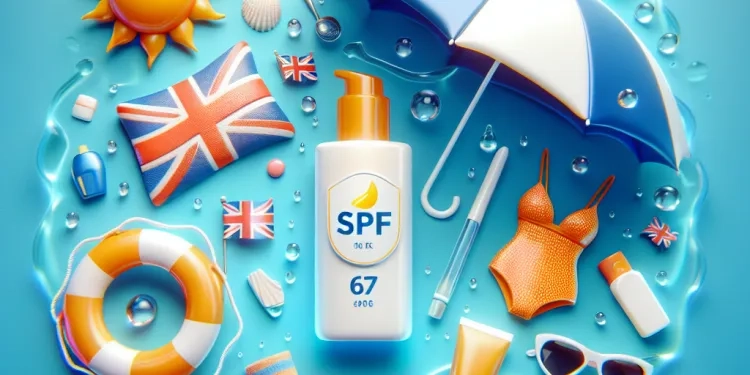
Do I need a different SPF for water-related activities?
Relevance: 82%
-

What SPF level is recommended to prevent sunburn?
Relevance: 81%
-

Should I use a different SPF for my face and body?
Relevance: 78%
-

What SPF should I use if I have sensitive skin?
Relevance: 77%
-

What SPF should I use if I am going to be outdoors all day?
Relevance: 76%
-

Which factor sunscreen should I use?
Relevance: 69%
-

What SPF is best for children?
Relevance: 58%
-

Do I need sunscreen on cloudy days?
Relevance: 54%
-

Is SPF 15 enough for everyday use?
Relevance: 54%
-

How often should I reapply sunscreen?
Relevance: 53%
-
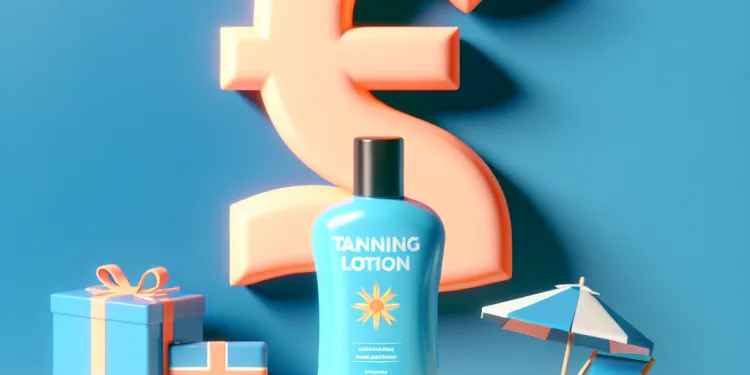
Does tanning lotion prevent sunburn?
Relevance: 49%
-

Can I use expired sunscreen?
Relevance: 48%
-
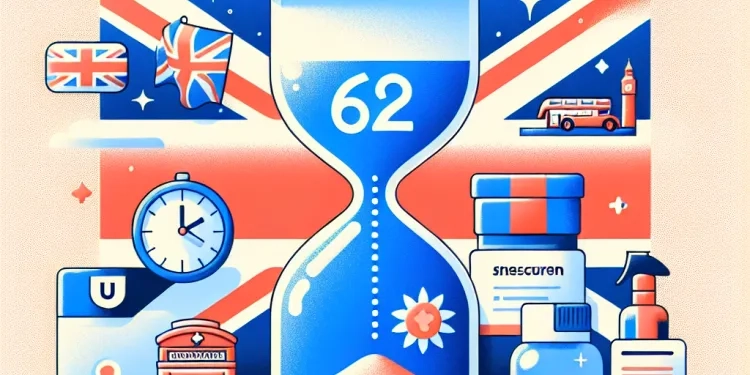
Does sunscreen expire?
Relevance: 47%
-

Which sunscreen should I use?
Relevance: 42%
-

What's the difference between chemical and physical sunscreens?
Relevance: 41%
-

How can I be sure that my sunscreen SPF rating is accurate?
Relevance: 39%
-

Can dark-skinned individuals get sunburned?
Relevance: 35%
-
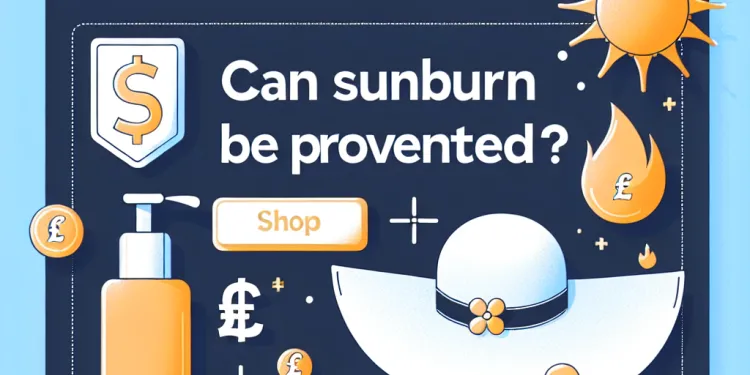
Can sunburn be prevented?
Relevance: 34%
-
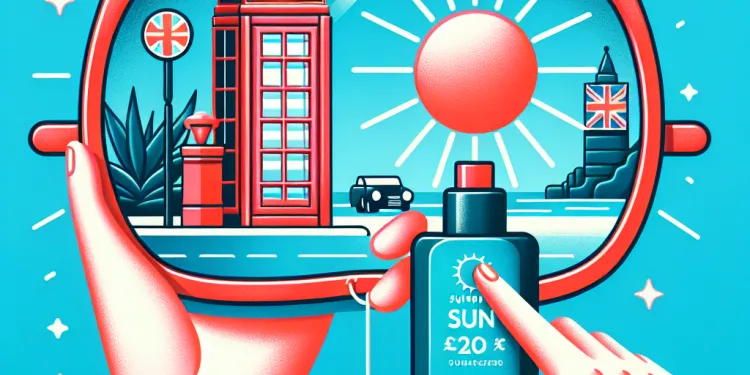
What is sunburn?
Relevance: 31%
-

What SPF is recommended for fair skin?
Relevance: 30%
-

What to do if you're sunburnt
Relevance: 30%
-

Self care - sunburn
Relevance: 28%
-

How do I choose the right SPF for daily use?
Relevance: 28%
-

What is Sunburn?
Relevance: 27%
-

Skin cancer education
Relevance: 26%
-

Can sunburn turn into a tan?
Relevance: 26%
-

What SPF should I use if I have darker skin?
Relevance: 26%
-

At what time of day is the sunburn risk highest?
Relevance: 25%
-

How can I keep children safe during a heatwave?
Relevance: 23%
-

Why do some people not burn as easily as others?
Relevance: 23%
-

Self care - sunburn
Relevance: 20%
-

What are UVA and UVB rays?
Relevance: 20%
-

Actinic keratoses (solar keratoses)
Relevance: 19%
-

Can sunburns cause permanent damage?
Relevance: 19%
-

How long does it take for sunburn to appear?
Relevance: 18%
-
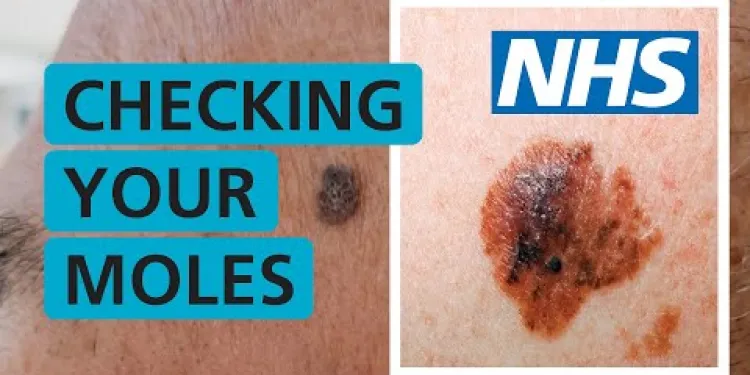
Skin Cancer - How do I check if my mole is skin cancer? | NHS
Relevance: 18%
Understanding SPF
SPF, or Sun Protection Factor, is a measure of how well a sunscreen can protect the skin from ultraviolet B (UVB) rays, the chief cause of sunburn and a contributor to skin cancer. The SPF number indicates the theoretical amount of time you can stay in the sun without getting sunburned compared to unprotected skin. For example, SPF 20 means you can be in the sun 20 times longer without burning than you could with no sunscreen.
Protection Level: SPF 20 vs SPF 50
SPF 20 blocks approximately 93% of UVB rays, whereas SPF 50 blocks around 98%. Although this difference may seem slight, those few percentage points can make a difference in prolonged sun exposure. SPF 50 offers more protection and is often recommended for individuals who are fair-skinned, sensitive to the sun, or spending extended periods outdoors.
Reapplication Frequency
Regardless of the SPF value, sunscreen should be reapplied at least every two hours, or more often if swimming or sweating. This is particularly important because sweat, water, and towel drying can remove sunscreen, reducing its effectiveness. SPF 50 does not last longer than SPF 20, so reapplication is equally essential for both.
Skin Type and Conditions
Your skin type and the conditions you'll be in play a crucial role in choosing the right SPF. For casual outdoor activities in the UK, where sun intensity may be moderate, SPF 20 could suffice for individuals with darker skin tones or those exposed to the sun only briefly. Conversely, SPF 50 is better suited for fair-skinned individuals or situations with high sun exposure, such as during beach holidays or hiking.
Texture and Formulation
Sunscreens with higher SPF often have thicker textures and may take longer to absorb, which can influence the user's comfort and willingness to apply the recommended amount. SPF 20 formulations may feel lighter and more wearable for everyday use, especially for people who use sunscreen under makeup.
Price Considerations
Sunscreen with SPF 50 can sometimes be more expensive than SPF 20. When budgeting, it's important to weigh the cost against the benefits and necessity of higher protection based on personal lifestyle and activities. Investing in a more protective sunscreen may be worthwhile if you spend a lot of time outdoors.
Conclusion
Choosing between SPF 20 and SPF 50 depends on your individual needs, lifestyle, and skin type. While SPF 50 offers higher sun protection, both require regular reapplication and are essential parts of sun protection strategies. Understanding the nuances of SPF allows for better skincare decisions and promotes healthier skin when enjoying time outdoors in the UK.
Understanding SPF
SPF stands for Sun Protection Factor. It tells you how well a sunscreen can protect your skin from the sun’s rays that make you sunburn and can cause skin damage. The SPF number shows how much longer you can stay in the sun without burning compared to not using sunscreen. For example, SPF 20 means you can be in the sun 20 times longer without burning than if you had no sunscreen.
Protection Level: SPF 20 vs SPF 50
SPF 20 blocks about 93% of the sun’s harmful rays, while SPF 50 blocks about 98%. Even though this difference seems small, it can matter if you are in the sun for a long time. SPF 50 gives more protection and is often recommended for people who have light skin, are sensitive to the sun, or are outside for a long time.
Reapplication Frequency
No matter what SPF you use, you should put on more sunscreen every two hours. You should do it more often if you are swimming or sweating. This is important because water, sweat, and towel drying can rub off the sunscreen, making it less helpful. Sunscreen with SPF 50 does not last longer than SPF 20, so you need to put it on again just as often.
Skin Type and Conditions
Your skin type and what you are doing matter when choosing SPF. If you are outside in the UK a little bit and have darker skin, SPF 20 might be enough. But if you have light skin or are in the sun a lot, like at the beach, SPF 50 is better.
Texture and Formulation
Sunscreens with a higher SPF might feel thicker and take longer to soak into your skin. This can affect how comfortable it feels and whether you want to use enough of it. SPF 20 sunscreens might feel lighter and easier to wear, especially if you put makeup on top.
Price Considerations
Sunscreen with SPF 50 can sometimes cost more than SPF 20. When you budget, think about the cost versus how much protection you need. Spending more may be worth it if you are outside a lot.
Conclusion
Choosing SPF 20 or SPF 50 depends on what you need, your lifestyle, and your skin type. SPF 50 gives more protection, but both SPF 20 and SPF 50 need to be put on again regularly. They are both important for keeping your skin safe in the sun. Knowing about SPF helps you make good choices to keep your skin healthy while spending time outside in the UK.
Frequently Asked Questions
What does SPF stand for?
SPF stands for Sun Protection Factor, which measures how well a sunscreen can protect the skin from UVB rays.
How does SPF 20 differ from SPF 50 in terms of protection?
SPF 20 allows about 5% of UVB rays to reach your skin, while SPF 50 only allows about 2% to reach the skin, providing stronger protection.
Is SPF 50 more effective than SPF 20?
Yes, SPF 50 offers greater protection against UVB rays compared to SPF 20.
Does higher SPF mean better protection?
A higher SPF offers more protection against UVB rays, but the increase in protection is not linear.
How long does SPF 20 last compared to SPF 50?
Both SPF 20 and SPF 50 should be reapplied every two hours, or immediately after swimming, sweating, or towel drying.
Is there a significant difference in protection between SPF 20 and SPF 50?
Yes, SPF 50 offers more protection but the difference in UVB absorption is small; about 1.3% more UVB protection than SPF 20.
Can I stay in the sun longer with SPF 50 than SPF 20?
SPF 50 provides longer protection but you should still seek shade and reapply sunscreen regularly.
Who should use SPF 50 instead of SPF 20?
Individuals with fair skin, a history of skin cancer, or those spending extended periods outdoors should consider SPF 50.
Is SPF 20 sufficient for daily use?
SPF 20 may be adequate for minimal sun exposure but higher SPF is recommended for prolonged outdoor activity.
Does SPF 50 prevent tanning better than SPF 20?
Yes, SPF 50 provides more protection which can reduce tanning compared to SPF 20.
Are there any differences in texture between SPF 20 and SPF 50 sunscreens?
Texture varies by brand; SPF level doesn't generally affect texture, so check products for preferences.
Is SPF 20 more suitable for oily skin compared to SPF 50?
SPF level doesn't determine suitability for skin type; check for specific formulations intended for oily skin.
How should sunscreen be applied regardless of SPF?
Apply generously and evenly on all exposed skin 15 minutes before sun exposure and reapply every two hours.
Does using SPF 50 sunscreen mean I can skip other sun protection measures?
No, you should still wear protective clothing, hats, and sunglasses, and seek shade.
Do SPF 20 and SPF 50 provide UVA protection?
SPF primarily measures UVB protection; look for 'broad spectrum' on the label for UVA protection as well.
Can SPF 20 or SPF 50 be used on children?
Yes, both are safe for children, but ensure the product is suitable for their skin and offers broad-spectrum protection.
Are SPF 20 and SPF 50 water-resistant?
Check packaging for 'water-resistant' labels; water resistance is not determined by SPF.
How much sunscreen should I use with either SPF 20 or SPF 50?
About an ounce (a shot glass full) should be used to cover the entire body.
Can SPF 20 be mixed with SPF 50?
Mixing sunscreens may affect consistency and protection; it’s better to use them separately as directed.
Is SPF 20 less expensive than SPF 50?
Price varies by brand and product, and isn’t necessarily determined by SPF level.
What Does SPF Mean?
SPF is a short way to say "Sun Protection Factor."
It tells you how well sunscreen can protect your skin from the sun.
You can use tools like a reading ruler to help follow text or take breaks if needed.
SPF means Sun Protection Factor. It tells you how good sunscreen is at keeping your skin safe from the sun's UVB rays.
What is the difference between SPF 20 and SPF 50 sunscreen?
SPF 20 lets a little bit of the sun’s rays get to your skin. SPF 50 lets even less of the sun’s rays get to your skin. SPF 50 gives your skin more protection.
Is SPF 50 better than SPF 20?
SPF stands for Sun Protection Factor. It helps keep your skin safe from the sun.
SPF 50 gives you more protection than SPF 20. This means it keeps your skin safer from sunburn.
When you go outside, it is good to wear sunscreen. Apply it on your skin, so the sun doesn't hurt you.
Here are some tips to help you use sunscreen:
- Put sunscreen on 20 minutes before you go out.
- Use more sunscreen every 2 hours.
- Don't forget to put it on your ears, nose, and neck.
- Wear a hat and sunglasses for extra protection.
Yes, SPF 50 sunscreen protects your skin better from the sun than SPF 20 sunscreen.
Tip: Try using a sunscreen guide app or tool to help pick the right sunscreen.
Does a higher SPF number mean better protection?
When you see SPF on sunscreen, it tells you how well it protects your skin from the sun. A higher number usually means more protection. For example, SPF 30 gives more protection than SPF 15.
If you stay in the sun a lot, it is good to use sunscreen with a higher SPF number. Always remember to put on sunscreen before going outside, and do it again if you swim or sweat.
Using extra tools like a hat or sunglasses can help protect you from the sun.
A higher SPF sunscreen gives you more protection from the sun's UVB rays. But, the extra protection is only a little bit more each time you use a sunscreen with a higher number.
How long does SPF 20 work compared to SPF 50?
Use both SPF 20 and SPF 50 sunscreen every two hours. Also, put it on again right after you swim, sweat, or dry off with a towel.
Do SPF 20 and SPF 50 protect your skin in different ways?
Yes, SPF 50 protects your skin better, but not by much. It blocks just a little more sun, about 1.3% more than SPF 20.
Is it safe to be in the sun for more time with SPF 50 compared to SPF 20?
SPF 50 sunscreen helps protect your skin for a longer time, but it's important to take breaks in the shade and put on more sunscreen often.
Who should use SPF 50 instead of SPF 20?
Some people need more protection from the sun. They should use SPF 50. This is when:
- You have very light skin
- You burn easily in the sun
- You will be outside for a long time
- You want extra safe skin
SPF means Sun Protection Factor. It helps keep your skin safe from the sun. Wearing a hat and sunglasses can also help.
People with light skin, or who have had skin cancer before, or stay outside a lot should use SPF 50 sunscreen.
Is SPF 20 good enough to use every day?
SPF helps protect your skin from the sun.
If you go outside, use sunscreen with SPF to keep your skin safe.
SPF 20 is okay for short times in the sun.
If you will be outside for a long time, use a higher SPF.
Ask an adult if you need help choosing sunscreen.
You can also wear a hat and stay in the shade to protect your skin.
SPF 20 is okay if you are in the sun for a little while. But if you stay outside longer, you should use sunscreen with a higher SPF.
Does SPF 50 stop your skin from tanning more than SPF 20?
SPF is a number that tells you how much sunscreen can help your skin when you are in the sun.
SPF 50 gives your skin more protection than SPF 20. This means it can stop your skin from getting a tan better.
If you want to spend time in the sun, use sunscreen to protect your skin. You can try both SPF 50 and SPF 20 to see which works best for you.
Always apply sunscreen even if it's not sunny. You should also wear a hat and stay in the shade if you can.
Yes, SPF 50 sunscreen gives more protection from the sun. This means you won't tan as much as when you use SPF 20.
Do SPF 20 and SPF 50 sunscreens feel different on your skin?
When you put sunscreen on your skin, it might feel a bit different. This feeling is called "texture."
Some sunscreens, like SPF 20 and SPF 50, may feel different. Here are some things to think about:
- SPF numbers tell you how strong the sunscreen is. SPF 50 is stronger than SPF 20.
- Sometimes stronger sunscreens (like SPF 50) can feel thicker.
- Not everyone feels the same, so you might want to try them to see which one you like best.
If reading is hard, try asking someone to read it to you. You can also use tools that read text out loud.
The feel of sunscreen can be different depending on the brand. How strong the sun protection is (SPF level) usually doesn't change how it feels. Try different products to see which one you like best.
Is SPF 20 better for oily skin than SPF 50?
SPF is sunscreen. It helps protect your skin from the sun.
Oily skin means your skin is shiny and feels greasy. People with oily skin may want a lighter sunscreen.
SPF 20 and SPF 50 are two types of sunscreen. SPF 50 gives more protection from the sun than SPF 20.
Whether SPF 20 or SPF 50 is better for oily skin depends on the sunscreen's feel, not just the SPF number. Some sunscreens are made for oily skin and feel lighter.
Use sunscreen that says "non-greasy" or "oil-free" on the label. This can help your oily skin feel better.
Always read the label and test a small bit on your skin first to see if you like it.
If you need help choosing, ask for help from an adult or a doctor.
SPF number doesn't tell you if it is good for your skin. Look for a sunscreen made for oily skin.
How do you put on sunscreen the right way?
Here are some easy steps to follow when putting on sunscreen:
- Use a lot of sunscreen. Make sure you cover all your skin that will see the sun.
- Put sunscreen on 15 minutes before you go outside. This gives it time to work.
- Rub the sunscreen in well so it covers your skin evenly.
- If you are in the sun for a long time or if you go swimming, put on more sunscreen every 2 hours.
Helpful tools: A timer can remind you when to put on more sunscreen. You can use a smartphone or a kitchen timer.
Put a lot of sunscreen on all your bare skin. Do this 15 minutes before you go outside. Put more sunscreen on every two hours.
If I use SPF 50 sunscreen, do I need to do anything else to protect myself from the sun?
SPF 50 sunscreen helps protect your skin from the sun. But you should still do other things to stay safe:
- Wear a hat to shade your face.
- Put on sunglasses to protect your eyes.
- Wear a t-shirt to cover your shoulders.
- Stay in the shade when the sun is very strong, usually between 10 a.m. and 4 p.m.
For extra help, set a reminder to reapply sunscreen every two hours or after swimming and sweating.
No, you should still wear protective clothes, hats, and sunglasses. You should also try to stay in the shade.
Do SPF 20 and SPF 50 protect against UVA?
SPF tells you how well sunscreen protects your skin from the sun. SPF 20 and SPF 50 give different levels of help.
SPF 20 and SPF 50 can protect against UVB rays. But, for UVA protection, look for sunscreen that says "broad-spectrum" on the bottle.
Try using sunscreen with "broad-spectrum" and reapply it every 2 hours when in the sun.
Ask an adult if you need help choosing the right sunscreen.
SPF tells you how much a sunscreen stops sunburn from UVB rays. To also get protection from UVA rays, make sure the sunscreen says 'broad spectrum' on the label.
Can children use SPF 20 or SPF 50?
Yes, children can use sunscreen with SPF 20 or SPF 50. SPF helps protect their skin from the sun. SPF 50 gives more protection than SPF 20.
If you are not sure which one to use, you can ask a doctor or a nurse.
It is also important to wear a hat and stay in the shade when the sun is very strong.
Yes, both are safe for kids. Make sure to pick a product that is gentle on their skin and gives good protection from the sun.
Can SPF 20 and SPF 50 stay on in water?
Look for 'water-resistant' words on the package. SPF does not tell you if it is water-resistant.
How much sunscreen do I need to use?
If you use sunscreen with SPF 20 or SPF 50, here is what you can do:
1. Use about a big coin size for your face.
2. Use about one handful for your whole body.
Put the sunscreen on 15 minutes before going outside.
Use a timer to remind you to put more sunscreen every 2 hours.
Use about an ounce of sunscreen (about the size of a shot glass) to cover your whole body.
Can You Mix SPF 20 and SPF 50?
SPF helps protect your skin from the sun. SPF 20 and SPF 50 are sunblock numbers. You might wonder if you can mix them.
It's best to use one sunblock at a time. Mixing different SPFs can make it less effective. Always choose one SPF and put it on evenly.
For more help, you can ask a grown-up or use a tool like a picture guide to understand better. Using a clock to remind you to reapply sunblock can also help.
Mixing sunscreens together can change how they feel and how well they work. It is better to use each sunscreen by itself, just like the instructions say.
Is SPF 20 cheaper than SPF 50?
SPF is a number on sunscreen. It tells how much it protects your skin from the sun.
SPF 20 and SPF 50 are both types of sunscreen. SPF 20 is lower, and SPF 50 is higher.
When you buy sunscreen, look at the price.
Compare the price of SPF 20 and SPF 50. This will help you know which one costs less.
You can ask a grown-up for help if you find it tricky.
Use a calculator to see the price difference if needed.
The cost can be different for each brand and product. The SPF number does not always change the price.
Useful Links
- Ergsy carfully checks the information in the videos we provide here.
- Videos shown by Youtube after a video has completed, have NOT been reviewed by ERGSY.
- To view, click the arrow in centre of video.
- Most of the videos you find here will have subtitles and/or closed captions available.
- You may need to turn these on, and choose your preferred language.
- Go to the video you'd like to watch.
- If closed captions (CC) are available, settings will be visible on the bottom right of the video player.
- To turn on Captions, click settings .
- To turn off Captions, click settings again.
More Items From Ergsy search
-

How does sunscreen with SPF 20 compare to SPF 50?
Relevance: 100%
-

Can makeup with SPF replace sunscreen?
Relevance: 98%
-

Is a higher SPF always better?
Relevance: 85%
-

What does SPF stand for?
Relevance: 85%
-

Do I need a different SPF for water-related activities?
Relevance: 82%
-

What SPF level is recommended to prevent sunburn?
Relevance: 81%
-

Should I use a different SPF for my face and body?
Relevance: 78%
-

What SPF should I use if I have sensitive skin?
Relevance: 77%
-

What SPF should I use if I am going to be outdoors all day?
Relevance: 76%
-

Which factor sunscreen should I use?
Relevance: 69%
-

What SPF is best for children?
Relevance: 58%
-

Do I need sunscreen on cloudy days?
Relevance: 54%
-

Is SPF 15 enough for everyday use?
Relevance: 54%
-

How often should I reapply sunscreen?
Relevance: 53%
-

Does tanning lotion prevent sunburn?
Relevance: 49%
-

Can I use expired sunscreen?
Relevance: 48%
-

Does sunscreen expire?
Relevance: 47%
-

Which sunscreen should I use?
Relevance: 42%
-

What's the difference between chemical and physical sunscreens?
Relevance: 41%
-

How can I be sure that my sunscreen SPF rating is accurate?
Relevance: 39%
-

Can dark-skinned individuals get sunburned?
Relevance: 35%
-

Can sunburn be prevented?
Relevance: 34%
-

What is sunburn?
Relevance: 31%
-

What SPF is recommended for fair skin?
Relevance: 30%
-

What to do if you're sunburnt
Relevance: 30%
-

Self care - sunburn
Relevance: 28%
-

How do I choose the right SPF for daily use?
Relevance: 28%
-

What is Sunburn?
Relevance: 27%
-

Skin cancer education
Relevance: 26%
-

Can sunburn turn into a tan?
Relevance: 26%
-

What SPF should I use if I have darker skin?
Relevance: 26%
-

At what time of day is the sunburn risk highest?
Relevance: 25%
-

How can I keep children safe during a heatwave?
Relevance: 23%
-

Why do some people not burn as easily as others?
Relevance: 23%
-

Self care - sunburn
Relevance: 20%
-

What are UVA and UVB rays?
Relevance: 20%
-

Actinic keratoses (solar keratoses)
Relevance: 19%
-

Can sunburns cause permanent damage?
Relevance: 19%
-

How long does it take for sunburn to appear?
Relevance: 18%
-

Skin Cancer - How do I check if my mole is skin cancer? | NHS
Relevance: 18%